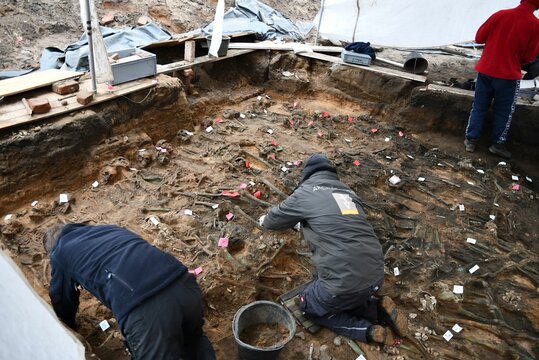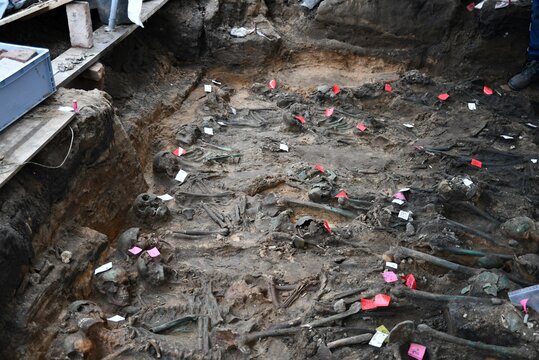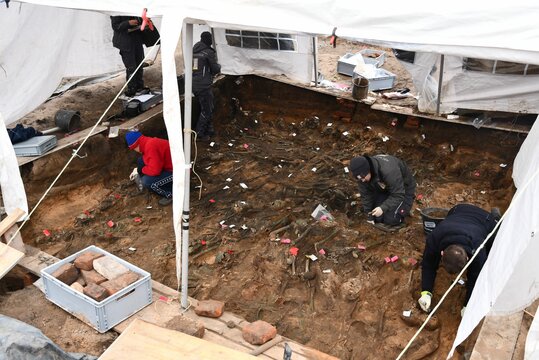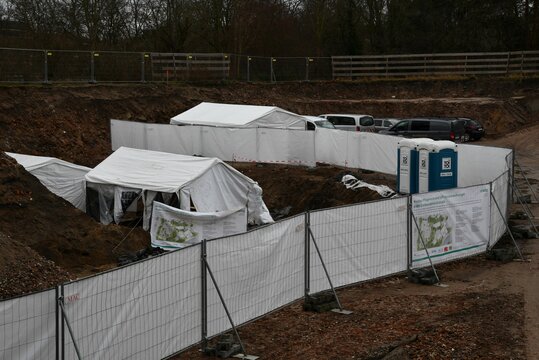WBG Nürnberg Beteiligungs GmbH - a subsidiary of wbg Nürnberg GmbH - is preparing for the construction of a new retirement home by carrying out extensive earthworks in the St. Johannis district. The approximately 5,900 m² site is located in the immediate vicinity of the Pegnitzgrund and borders on Brückenstraße and Großweidenmühlstraße.
As part of the preparatory work for the building construction, archaeological excavations have been taking place on the construction sites of the future new buildings since October 2023. One of the largest plague cemeteries in Germany was found as part of these activities. Under the direction of city archaeologist Melanie Langbein and chief anthropologist Florian Melzer, more than 500 burials have been secured so far. The current expected dimension is between 1,000 and 1,500 burials, which probably date from the first half of the 17th century.
"We will secure and archive all human remains that are found in the future construction areas. We currently assume that once the work is completed in the spring, this will be the largest emergency cemetery for plague victims excavated in Europe," Melanie Langbein and Florian Melzer state during a press conference.
"This discovery is of great significance far beyond the region. Historical documents show that plague cemeteries were located 'outside' the city in the direction of Rochusfriedhof and St. Johannis. The one in St Johannis has now apparently been found. The graves contain the mortal remains of children and old people, men and women; the plague did not stop at gender, age or social status. Now, for the first time, an empirically reliable analysis of a large population group from this period can be carried out for a city with the importance of Nuremberg," explains Lord Mayor Marcus König at the excavation site. "It goes without saying that this historically and archaeologically significant find must be handled sensitively and appropriately."
"As a developer, we are aware of the importance of archaeology and the obligation to carry out such excavations. However, we did not expect such a discovery and will now try to make the best of the situation. On the one hand, it means that we are doing everything we can to keep to the schedule for the retirement home to be built and, on the other, we will do our bit to ensure that the historical find is documented in the form of a brochure," says Ralf Schekira, Managing Director of the wbg Group.
Further information can be obtained from city archaeologist Melanie Langbein at melanie.langbein@stadt.nuernberg.de. She asks for your understanding if it may take some time to reply.
For information on the construction site, the building project and the schedule, please contact the wbg press office on 0911 8004-139.





